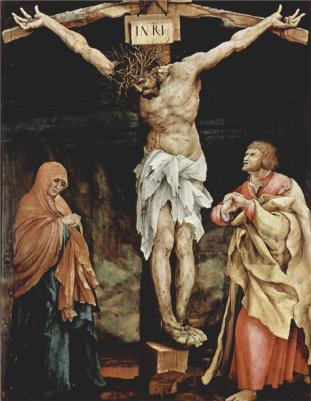
Mosaic of the Resurrected Christ, Resurrection Chapel at the Washington DC Cathedral
The abundance and the life of the Spirit is being poured out all the time, but in order to receive it, we need a vessel to raise up. At Easter, the empty space in the center of our being which has burned in longing is allowed now to become a cup, and to be filled anew.
All week, we have been on a search together for the Holy Grail—the mythical cup which brings living spiritual nourishment to the human being bound to the struggle of life on earth. The Holy Week revealed this cup in the most intimate aspects of the human being as a spirit wrestling within the limitations of bodily life, and we asked: how can we offer? How can we receive? Who can drink from this cup and receive the healing medicine?
The question in this hour at the altar when we aim to consecrate the human being becomes: can we worthily fulfill the chalice-making of the human being—individually and together? Can we become the Grail itself—each in our own expression?
The boldness of Easter is that we are allowed to stand at the altar and raise ourselves into the form of a chalice, before we are fully that Grail. We step into the gesture that He gives us—on the cross and in his deed of entering death and bringing nourishment through his overcoming death, through the resurrection. We celebrate this great act and pray it into our own being.
Whatever we have suffered or are suffering still, it can become part of this holy cup. We do not have to wait until our suffering is done. We do not have to wait until we have been made whole. Our longing to be healed and to love brings us into relationship—with each other and with the divine. It warms our hearts and gives us the fire to seek courageously to be reconciled to the holy ones who call us to meet together here.
To not dare would be like waiting to receive the baptism until one is perfected. But we baptize the children. The newly born who have yet even to begin, and who have a full life of learning and struggle and becoming ahead of them. And we confirm those who are only beginning to battle for the life of their souls, not at the end when all that is extreme is overcome. To come to stand at the altar is for those who are willing to enter life most fully.
We receive the blessing of being God’s children because we need God and God needs us. The whole of Creation, according to Paul, sighs in expectation that we become Sons and Daughters of Light. The whole of the cosmos is waiting for us to come of age.
To make the resurrection ever more real in the unfolding of human evolution, requires some human beings who are willing to come forward and say: Yes, I will practice raising myself up—all my faults, all my sorrows, all my weaknesses—along with all my hopes and all my gifts.
So we become a community gathered around the chalice: offering from the heart and the mind and the will the best we can muster in each moment. And what shall we receive?
We were made to make meaning of our lives but also to find it.
We were made to give love and also to receive it.
We were made to bring joy to this darkened earth, and also to feel joy in the depths of our own being.
For all this, do we raise our cup, the Holy Grail, together.

 John 19: 16-42
John 19: 16-42

 During Holy Week this year in my congregation we are looking at the events on the way to and through the cross in connection with the search for the Holy Grail. As you might suppose, this connection is less about the outer search through history for an actual cup than it is about the activity of the Grail in the individual and in community. The Grail is something we raise up in offering, and into which something can be received from above. It requires the activity of the free individual, but finds its most expansive meaning when it becomes a shared experience. It has to do with the heart. It has to do with the meaning of Christ’s uniting himself with humanity and the earth. The sermons during the week as well as conversations following our communion service the Act of Consecration of Man are explorations of the connection between these essential images within Christianity.
During Holy Week this year in my congregation we are looking at the events on the way to and through the cross in connection with the search for the Holy Grail. As you might suppose, this connection is less about the outer search through history for an actual cup than it is about the activity of the Grail in the individual and in community. The Grail is something we raise up in offering, and into which something can be received from above. It requires the activity of the free individual, but finds its most expansive meaning when it becomes a shared experience. It has to do with the heart. It has to do with the meaning of Christ’s uniting himself with humanity and the earth. The sermons during the week as well as conversations following our communion service the Act of Consecration of Man are explorations of the connection between these essential images within Christianity.
 On Palm Sunday we walk with Christ Jesus into Jerusalem now towards the Cross. He enters, knowing it will lead to his death, knowing it will involve great suffering on the way to death.
On Palm Sunday we walk with Christ Jesus into Jerusalem now towards the Cross. He enters, knowing it will lead to his death, knowing it will involve great suffering on the way to death.